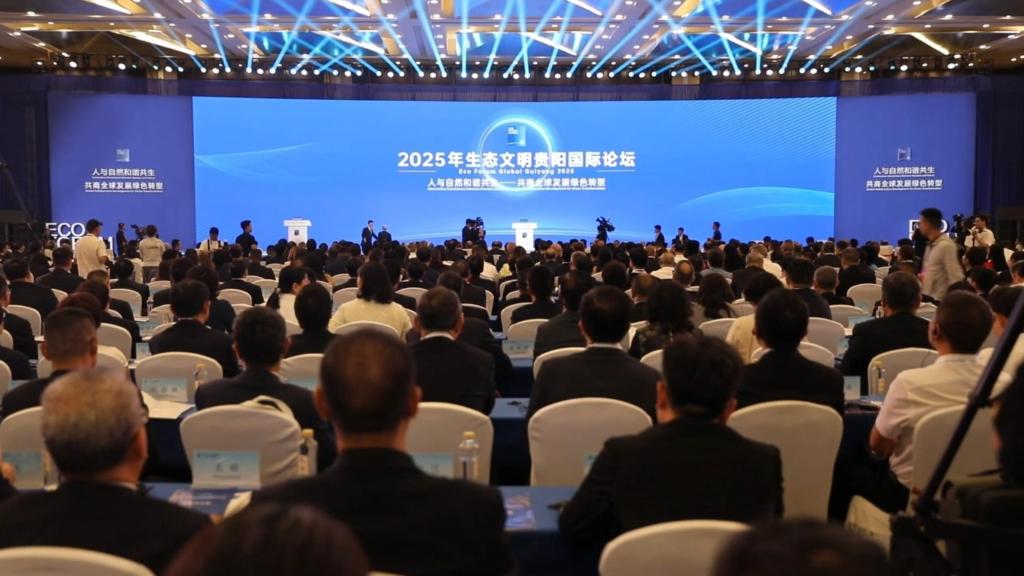Xinhua Headlines: Vast pair-up program powers modern makeover of NW China's Xinjiang
Source: Xinhua
Editor: huaxia
2025-07-07 22:10:02
* A vast pair-up program is powering in northwest China's Xinjiang Uygur Autonomous Region, where 18 provincial-level regions and the southern Chinese tech hub of Shenzhen have helped to create jobs, improve skills and promote unity .
* Xinjiang's development has long benefited from nationwide talent exchange endeavors. Today, notably, digital tools are transforming traditional aid models into scalable, tech-driven partnerships.
* In recent years, partnerships between Xinjiang and supporting provinces and cities have expanded from government projects to business and cultural exchanges.
URUMQI, July 7 (Xinhua) -- Inside a brand-new workshop at a buzzing textile factory in Hotan, northwest China's Xinjiang Uygur Autonomous Region, Zulaya Tursuntohti deftly handled the whirring spinning frames to produce fine cotton threads. Just months ago, this job, and her 3,500-yuan (about 489 U.S. dollars) monthly paycheck, did not exist.
Hundreds of kilometers away, meanwhile, in Kashgar's saline wastelands, farmer Turghun Yasen marveled at seedlings of silage corn springing up from once-barren soil.
These snapshots reveal glimpses of the quiet engine powering China's vast western region, namely a pair-up program where 18 provincial-level regions and the southern Chinese tech hub of Shenzhen have been creating jobs, improving skills and promoting unity in this northwestern frontier of the country.
China has been implementing the "pairing assistance" program in Xinjiang since 1997. In 2010, a new round of pairing assistance was launched, involving central and state organs, centrally administered state-owned enterprises, and 18 provinces, municipalities and the city of Shenzhen.
This cross-regional endeavor, which sees those involved channeling 80 percent of their annual assistance funds to county-level and grassroots projects dedicated to livelihood improvement, has become a national strategy vital for prosperity and stability in economic backwaters.
SEEDING SELF-SUFFICIENCY
"Providing money is good, but building a solid industry is better," said a veteran aid official, capturing the essence of pairing assistance for Xinjiang -- transitioning from dependency on external support to fostering endogenous growth momentum.
Although Xinjiang is a major cotton-producing region known for its high-quality cotton, its textile industry faces several challenges due to its weak technological capacity and limited industrial upgrading.
When the Beijing assistance team invited a Guangdong-based textile industrial internet company to Hotan last August, they brought more than just machinery. The company from south China instead fostered an integrated supply ecosystem, spanning e-commerce, fabric weaving and dyeing, as well as facilitating high-quality fashion garment production.
Tursuntohti is among some 700 new employees for the first phase of the project. "I saw the job posting in February and decided to apply," she said. Once fully operational, the project is expected to create more than 3,000 jobs, support over 200 apparel firms, and boost regional industrial output by more than 3 billion yuan annually, Huang Haoming, executive of the project, revealed.
In 2024, the region's cotton and textile industry had generated an output value of 220 billion yuan and provided jobs for over 1 million people.
Meanwhile, agricultural scientists have targeted Kashgar's highly saline-alkali wasteland. Faced with a desolate landscape, they introduced customized soil treatments -- which have resulted in 200 mu (approximately 13.3 hectares) of silage corn springing to life via a seedling success rate of 95 percent, proving a lifeline for farmers like Yasen.
"We used to watch seedlings die, but now our green fields yield corn, and we can even plant winter wheat to enrich the soil," he said.
Ren Gengpo, a member of Shanghai's assistance team who currently serves as deputy director of Kashgar's bureau of industry and information technology, credited 29,000 local jobs to such locally-grounded projects capitalizing on regional strengths, including a "Chief Service Officer" system matching coastal expertise to Xinjiang's resources.
"More locals are securing steady jobs right in their neighborhoods," Ren noted.
NURTURING HOMEGROWN TALENT
At the remote county hospital of Habahe in Xinjiang's Altay Prefecture, orthopedic scans now reveal fractures in precise 3D detail, while high-resolution color ultrasound makes for clearer and more intuitive diagnosis of pediatric conditions.
"Smart diagnosis facilitates real-time data sharing between doctors, thus enabling cross-regional diagnosis that enhances medical care accessibility, upskills local clinicians, and cuts patient costs," said Zhang Jing, a medical assistance practitioner from Jilin Province in northeast China, whose team has delivered many intelligent medical equipment items.
Xinjiang's development has long benefited from nationwide talent exchange endeavors. Today, notably, digital tools are transforming traditional aid models into scalable, tech-driven partnerships.
When an aid team from east China's Hangzhou, the country's e-commerce, livestreaming, fintech and AI heartland, noticed youth in Aksu in Xinjiang hawking fruit on social media, they built an e-commerce incubator and partnered with top multi-channel network (MCN) agencies to train local talent.
Mirzat Kamil, who returned home after seeing that many there were selling farm goods via live-streaming, joined the "Dandelion Project," which enabled him to learn digital marketing skills and become a top regional e-commerce influencer within a year. "These training programs opened new doors for me," he said.
"Local e-commerce talents like Kamil are planting seeds of prosperity across our region," said Yang Zhe, Aksu's e-commerce director. With Hangzhou's support, Aksu has partnered with Alibaba and social e-commerce firm Yowant Technology to launch training programs. By 2024, more than 9,500 professionals had been trained -- creating 30,000 jobs.
Even classrooms have been transformed via "teacher studios." Ni Yuan, a teacher from Tianjin Municipality in north China, who was posted to the first primary school of Qira County in Hotan to serve as its deputy principal, mentored local teachers like Sadinisa Abdulla while also launching art programs.
"She raised our teaching quality through professional excellence," Abdulla noted. "We've learned a lot from her."
Over the past five years, teachers in Xinjiang have received training on a total of more than 200,000 occasions.
Henan Province in central China also deserves a mention here, having deployed scientists and engineers across multiple sectors, while providing skills training for more than 78,000 people in fields such as logistics and law.
WEAVING STRONGER BONDS
In recent years, partnerships between Xinjiang and supporting provinces and cities have expanded from government projects to business and cultural exchanges. Beyond bricks, mortar and jobs, the pair-up program has strengthened ethnic unity -- with all ethnic groups striving together like pomegranate seeds.
When Abudushuqur Nurahmat, a middle school student from Kashgar's Yecheng County, joined a study trip to Beijing last summer, Tian'anmen Square, the Forbidden City, the Great Wall and other places he'd only seen in textbooks came to life in vivid detail. "Watching the flag-raising at Tian'anmen Square made me feel incredibly proud," he recalled.
Since 2023, provinces and cities supporting Xinjiang have organized tens of thousands of local residents and youth from various ethnic groups to visit historical sites and top universities across China.
Grassroots bonds have also flourished. Tianjin schools partnered with Hotan counties, Jiangxi in east China hosted football exchanges for ethnic minority juveniles from Kirgiz Autonomous Prefecture of Kizilsu, while Henan built 100 libraries in Hami honoring national role model Jiao Yulu, a county cadre known for his selfless devotion to the people.
In addition to such cultural exchanges, improved logistics have also helped to strengthen daily connections. At a Xinjiang product exhibition and sales center in the Guangdong-Hong Kong-Macao Greater Bay Area in south China, premium Xinjiang goods like walnuts, fruits and mutton flew off shelves. Meanwhile, in Kashgar, located 5,000 km away, customers can easily order Cantonese dishes, appliances and clothing online through the same cross-regional trade platform.
Supporting provinces and cities have even pooled resources beyond assigned pairings. Musicians of the Cixi Celadon Ou Music Troupe from east China's Zhejiang Province performed ancient melodies in Beijing-supported Hotan this June, an artistic bridge thrilling locals like Ibrahim Hamit. "The show was both an artistic treat and a profound experience of China's rich cultural diversity," he said, while adding that he was hoping for more such exchanges.
Shandong Province, in east China, landed a 300,000-tonne titanium dioxide project in Shanghai-supported Bachu County, while Jiangsu, also in east China, paired with Ili in northern Xinjiang and helped launch 21 textile enterprises in southern Xinjiang. This innovative collaboration model combines funding, technology and expertise from supporting provinces with Xinjiang's resources and policies -- creating mutual benefits.
"We're helping Xinjiang grow its own future," said a veteran aid official.
(Video reporters: Ma Yunfei, Li Ziliang, Liu Bing, Cai Guodong, Yu Tao, Gu Yu; video editors: Hong Ling, Luo Hui, Yin Le) ■













Comments